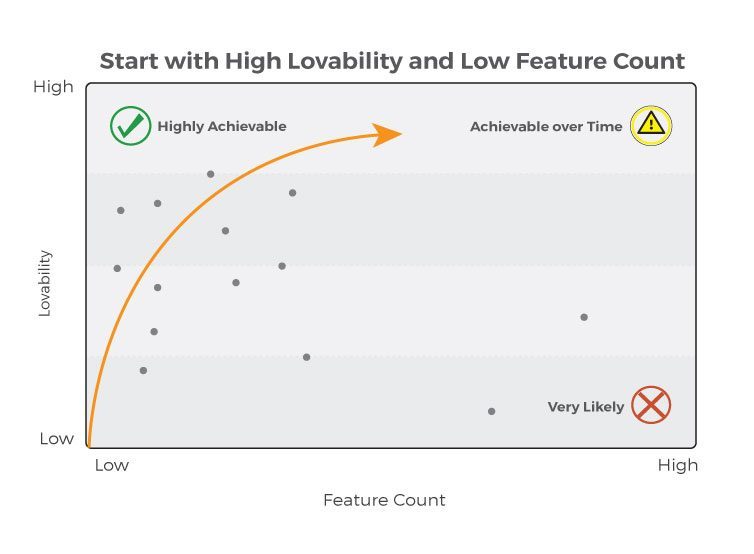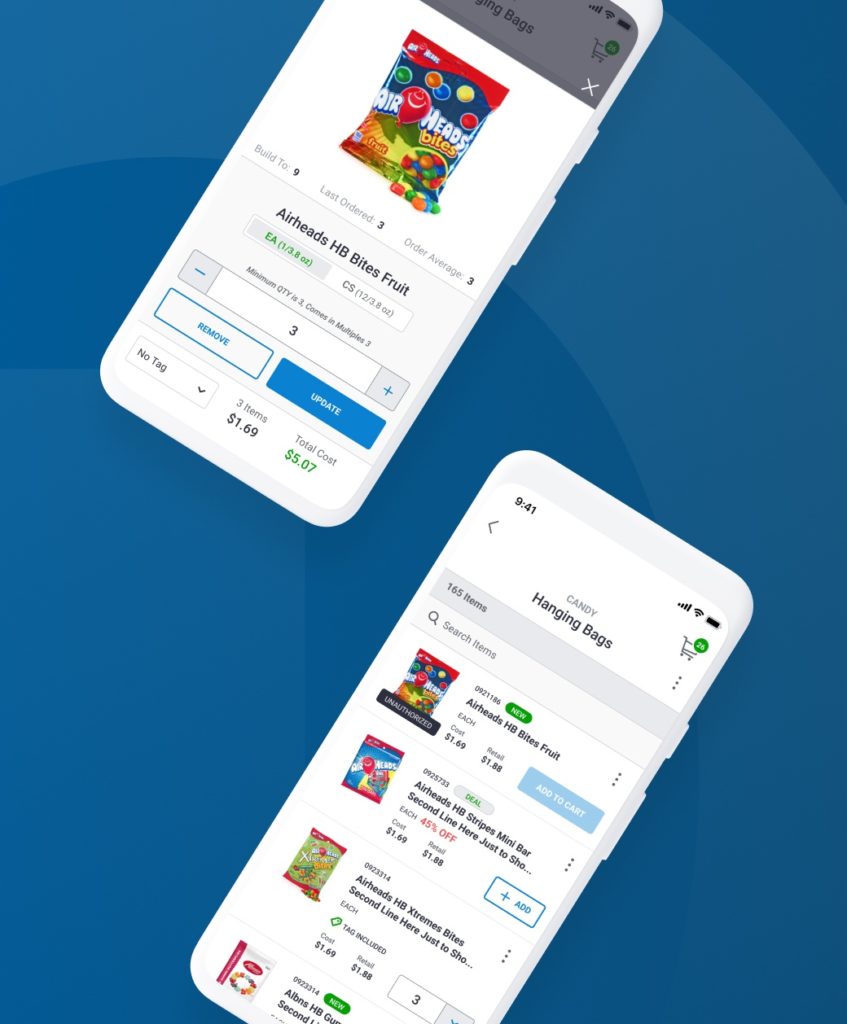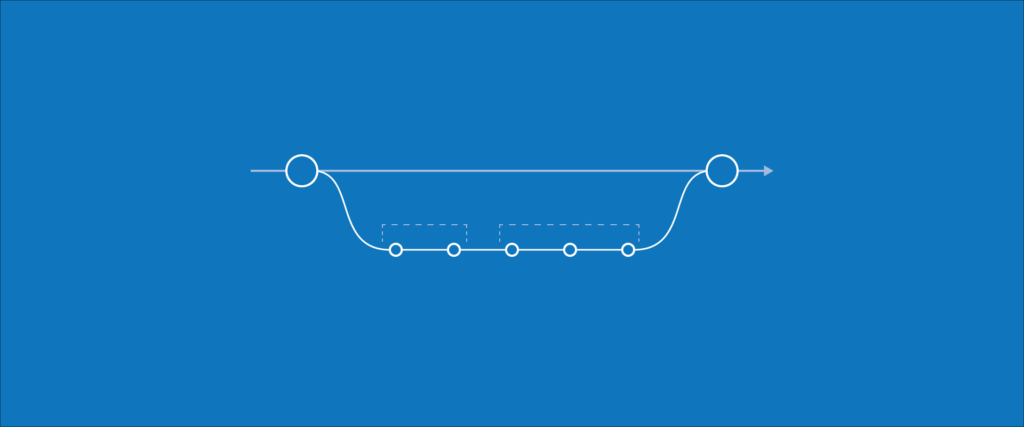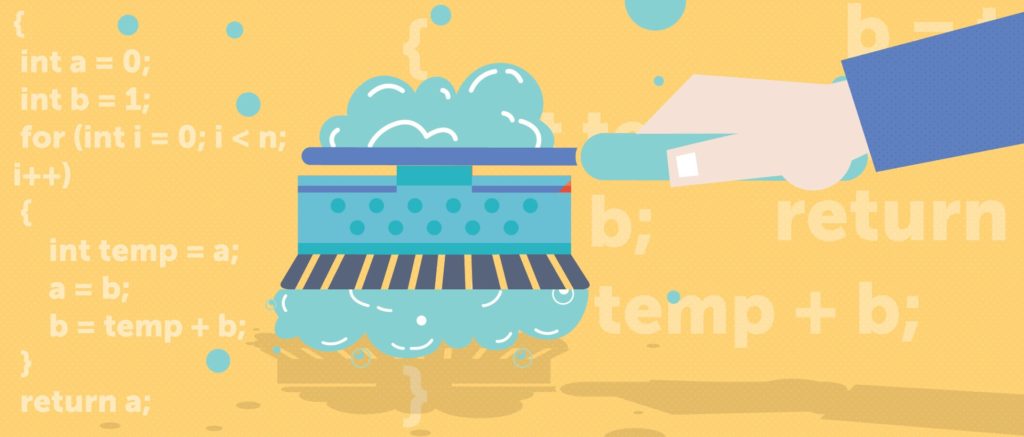Article
Start with Less to Create a Truly Lovable Product

When it comes to designing an application, it’s tempting to get caught up in thinking that more is better. But designers often stuff the first iteration of a product with so many features that it overwhelms users and obscures the product’s value.
One alternative is to release something less substantial: a Minimum Viable Product, or MVP. It’s slim and has the basic features you’re interested in testing. It isn’t perfect, but by testing with it, you’ll learn a lot about who your users are and what features are important to them.
Another approach is to release something that is both slim and lovable. In a perfect world, we could mobilize early adopters to market our products for us. Even though it sounds like a far-fetched business plan, it’s actually completely within the realm of possibility. And it starts with a Minimum Lovable Product (MLP).
The Strategy of Starting with Less
A Minimum Lovable Product does one thing really well instead focusing on doing too much.
The ongoing success of your product can be built upon the foundation set by the MLP. Get people to believe that what you’re creating is essential and you can build out the product in future iterations.
Features aren’t bad in and of themselves. The danger lies in not thinking strategically about how quickly you are releasing them. Without understanding which features are working well and which are not, you run the risk of releasing features that negatively affect UX. With feature stuffed products, there’s often too much complexity and too little UX.
Different challenges surround the release of too many features. The challenges include:
- Features and Cognitive Load – A surplus of features often leads cognitive overload and user frustration
- Features and Usability Risk – In an effort to increase feature count, you increase usability risk
- Features and Technical Debt – The more features you develop and release, the harder it will be to change course
- Features and Cost – Developing more features costs money, and having to change the features retroactively costs even more
- Features and Time – Developing features takes time, whether it’s spread strategically over a longer period or used on the front end
- Features and Training Effort – The more features you include, the more effort and explaining it takes to educate your audience
The strategy that is utilized at the beginning of building an app is essential, and starting with focused features and excellent usability is crucial.
Stage 1: Use An MVP For Early Controlled Testing
An MVP, or Minimum Viable Product, is the first lightweight version of your product that is stripped down to its most essential features. The viability of an MVP hinges on actively soliciting feedback from its first users about what works and what doesn’t.
This isn’t the time to do heavy marketing – it’s the time to learn more about who your users are, as finding that out definitively in the user research phase is not always possible.
On his blog, Brian de Haaff, CEO of SaaS Product Roadmap Software company Aha!, argues that that MVPs aren’t always desirable. He states that “A can of cat food is a Minimum Viable Product (MVP) when you are starving, but it’s highly unsatisfying and unlikely to generate a loyal following (of humans).”
While an MVP is a useful field testing tool, it won’t necessarily make a good first impression, and in the business of making products that people enjoy using and creating brands that people become loyal to, making a good first impression is everything.
So essentially, think of an MVP as a field testing tool rather than your go-to-market strategy. By gathering data about what users like and dislike, you can start to hone in on what matters for future iterations.
Stage 2: Use an MLP As Your First Product Release
In the design field, there is often a fear of over-investing and a danger of under-investing. The reality is that under-investing risks missing an opportunity to create a product that people love.
An MLP is similar, in concept, to an MVP. It’s a lightweight version of a product. It allows the team to learn more about the users and to stake a claim on an intellectual property.
The main difference between the two is that the intention behind an MLP is creating something that is truly delightful to use.
Do you take the time to develop new features or make something really slick that performs? This is an ongoing debate to consider. We recommend putting more time into creating less features and a better user experience.
The MLP should immediately convey the product features that are most valuable to users. It’s a prime example of the storytelling principle “Show, don’t tell.” Your product should immediately convey its unique value proposition to your early tribe members, bringing back the maximum amount of love and loyalty from them.
Once again, to Brian de Haaff’s analogy, an MVP does serve the purpose of teaching you what your users like and don’t like, but at the risk of losing their trust and loyalty. An MLP accomplishes the same purpose, but in focusing on creating something that is delightful to use, you can also accomplish the goal of developing more loyalty.
Stage 3: Allow Users to Grow with the App
The key to creating an MLP that conveys a unique and compelling value proposition is to do one thing super well. Make it amazing. Make it something that people love.
Dropbox was released with a core functionality: cloud storage and file synchronization. From 2007 to 2011, Dropbox focused on perfecting this basic function before adding additional features later such as the ability to upload photos directly, the unveiling of Dropbox Business, and crowdsourced add-ons created by the very users who loved and adopted the original product. Due to the immense popularity of the first MLP, Dropbox was able to start with less and build upon the firm foundation they had created.
Instagram took a similar approach. It started as a photo customization and sharing application. It has evolved drastically and is now one of the most prominent social media platforms. By starting with a basic feature that users loved, Instagram created a simple roadmap for future success.
Features aren’t a bad thing. They just need to be released strategically and at the right moment when your product and users are ready for them. A variety of other products – such as Gmail, Google Docs, Asana, and Basecamp – also illustrate the viability of this strategy.
If you release features in strategic sets over time, you can maintain adoption, creating a positive cycle of learning and mastering features as the product grows. Your aim should be to continually start at a high rate of immediate adoption of new features and push to a theoretical maximum rate of adoption before loading up more features. This ensures that users are not constantly overwhelmed but are comfortable with, ready for, and enthusiastic about new features.
Conclusion
Your ultimate vision for your application won’t be compromised by starting with less on the front end. To the contrary, by starting with less you’ll be enabled to create something lovable that will allow you to grow exponentially.
Focus on creating a unique and unforgettable experience. We’ve found that a lovable product creates more conversions and more value for customers.
Design should be informed by value. Let the strategy of starting with something lovable be what differentiates you from the competition. Doing so will allow you to take more risks and become more innovative as your users and your application grow together.
Read our entire white paper, The Strategy of Starting with Less, on Fresh’s Resources page!









